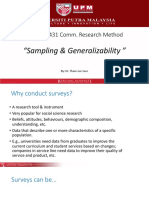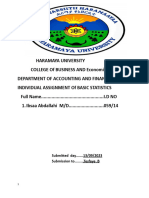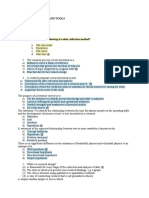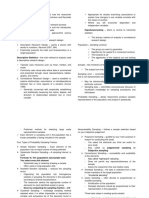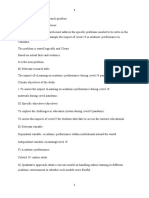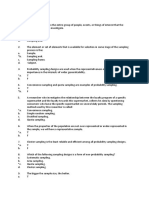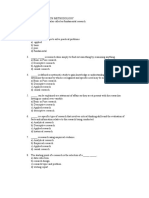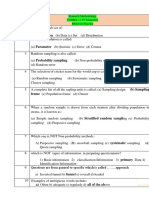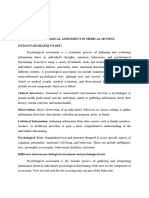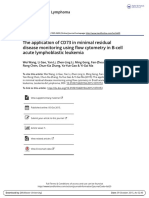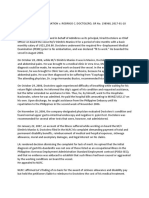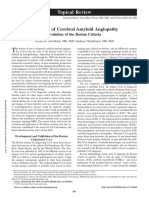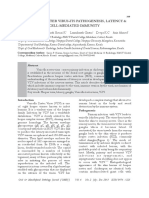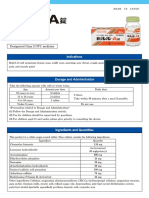0% found this document useful (0 votes)
56 views17 pagesSurvey Methods
The document provides information about survey methods and sampling techniques. It discusses the purposes and types of surveys, as well as common methods for administering surveys. It also covers different sampling strategies and their applications in research. Small-N research designs are introduced as focusing on intensive study of a few cases to understand causal relationships.
Uploaded by
KkrCopyright
© © All Rights Reserved
We take content rights seriously. If you suspect this is your content, claim it here.
Available Formats
Download as PDF, TXT or read online on Scribd
0% found this document useful (0 votes)
56 views17 pagesSurvey Methods
The document provides information about survey methods and sampling techniques. It discusses the purposes and types of surveys, as well as common methods for administering surveys. It also covers different sampling strategies and their applications in research. Small-N research designs are introduced as focusing on intensive study of a few cases to understand causal relationships.
Uploaded by
KkrCopyright
© © All Rights Reserved
We take content rights seriously. If you suspect this is your content, claim it here.
Available Formats
Download as PDF, TXT or read online on Scribd
/ 17



